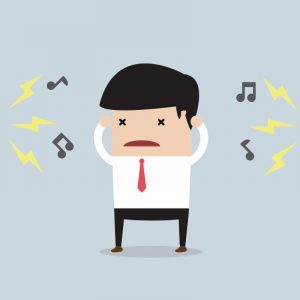 With people living in close proximity to one another, it is routine for community associations to deal with complaints that can only be described as “nuisances.” To help address this scenario, governing documents for many associations contain a general provision prohibiting nuisance-type activities or behavior (e.g., barking dogs, smoking or an unkempt yard). Although the nuisance provision seemingly works well as a catch-all, when it comes to actually enforcing it, most community associations will run into difficulty.
With people living in close proximity to one another, it is routine for community associations to deal with complaints that can only be described as “nuisances.” To help address this scenario, governing documents for many associations contain a general provision prohibiting nuisance-type activities or behavior (e.g., barking dogs, smoking or an unkempt yard). Although the nuisance provision seemingly works well as a catch-all, when it comes to actually enforcing it, most community associations will run into difficulty.
The prevailing case law in Georgia addressing nuisance behavior—in a community association setting—found that the standard provision in most governing documents is too vague to be enforceable. This decision comes from Douglas v. Wages, 271 Ga. 616, 617 (1999), in which the Georgia Supreme Court held that a prohibition against “noxious or offensive activity” or anything “which may be or may become an annoyance or nuisance” was unenforceable unless it fell within the statutory definition of nuisance (see O.C.G.A. § 41-1-1). Since Douglas, it has been extremely difficult for community associations to bring legitimate nuisance actions against owners, and often, an individual owner’s right to enforce against the specific activities or behavior will be greater than the association’s.
Despite this legal roadblock, there are a few general guidelines that can help when it comes to enforcing against nuisance activities or behavior in a community association setting:
First, as a general rule of thumb, if only one owner is complaining about the specific activities or behavior, it may not rise to the level of statutory nuisance, which would allow enforcement by the association. For example, one owner complaining to the association about excessive noise from an upstairs unit owner will generally be deemed an owner to owner issue, as it probably does not rise to the level of a “nuisance” under the governing documents or Georgia law. The affected owner may have an individual cause of action against the upstairs owner, but the association’s ability to enforce its nuisance provision may be nonexistent because of Douglas. However, if several owners are complaining about the noise, there may be a stronger argument that the noise actually qualifies as a “nuisance” under the Georgia statute.
Second, when attempting to enforce a nuisance provision, it is important to document the issue(s) as carefully as possible. In addition, repetitive, nuisance-type activities or behavior will likely give one a stronger case for enforcement than just a single incident. For example, an owner’s dog barking incessantly for one afternoon may not be actionable; but if the dog barks incessantly for a week straight, this latter scenario is likely to rise to the level of statutory nuisance. A solid record of dates, times, duration and even photos or recordings of the activities or behavior is vital for establishing a pattern.
Third, it is helpful for an association to specify, in its governing documents or by rule and regulation, the activities or behavior (and the frequency of which) that would actually constitute a “nuisance.” Obviously, it is impossible to identify every single type of issue that could arise, but the more specific an association can get, the more likely it can enforce the restriction. In addition, being specific in the governing documents will better prepare owners for recognizing nuisance-type activities or behavior.
Finally, it is important to educate and remind owners on respecting the quiet enjoyment of other owners in the community, as well as making sure they understand the legal obligations and limitations of the association when it comes to a “nuisance.” By setting realistic expectations and standards for owners, difficult situations can be diffused or avoided altogether.
